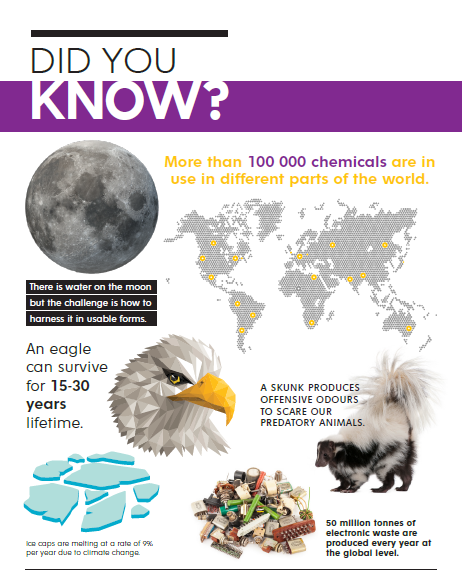Resource scarcity, environmental degradation and climate change are the most obvious calamities the world is facing today as a result of the use of oil, natural gas, coal and other petrochemicals. These fossil fuels often pollute the environment and cause other damage, making the switch to renewable energy even more important. An ecological and socially just energy supply can only be ensured by using renewable energy. Solar energy always had the highest hopes of making a reliable and sufficient energy source among other renewable sources such as biomass, wind, water, waves and geothermal. In recent decades, solar cells have become cheaper, more efficient, and environment friendly. However, current solar cells tend to be opaque, which prevents their wider use and integration into everyday materials, constrained to being lined up on roofs and in remote solar farms.
Imagine a world where we could generate electricity using the surface of our windows, displays, smartphones, our car’s sun roof or the glass roof of our office building. That is the hope of Professor Joondong Kim from the Department of Electrical Engineering at Incheon National University, Korea. Professor Kim and his colleagues have managed to put their theory into practice by creating a fully transparent solar cell. In the history of solar energy this is the first time a fully transparent solar cell has been tried. A transparent solar panel is basically a counterintuitive concept since solar cells must absorb sunlight (photons) and convert them into power (electrons). When a solar glass is transparent, the sunlight will pass via the medium and defeat the purpose of utilizing sunlight. However, this new solar panel technology is changing the way solar cells absorb light. The cell selectively joins a portion of the solar spectrum that is invisible to the human eye, while tolerating the normal visible light to pass through. To achieve this, the researchers have developed the transparent luminescent solar concentrator rather than trying to do the impossible by creating a transparent photovoltaic glass cell. These cells are composed of organic salts that are designed to absorb specific invisible UV and infrared light wavelengths, which then glow as another invisible wavelength. This new wavelength is then guided to the edge of the window plastic, which thin PV solar cell strips convert it into electricity. The technology uses organic molecules which absorb wavelengths of light that are invisible to the human eye, like infrared and ultraviolet light.
According to him transparent photovoltaic cell (TPC) will have various application in the human technology. His aim was to devise a high-power producing transparent solar cell, by implanting an ultra-thin film of amorphous Silicon between zinc oxide and nickel oxide. The effectiveness of this innovative design comprising of the Silicon film include its ability to utilize longer-wavelength light, efficient photon collection and the fact that it permits fast transport of charged particles to the electrodes. Apart from that, this novel design can potentially generate electricity even under low-light situations (for instance, on cloudy or rainy days). Unlike the traditional dark, opaque solar cells (which absorb visible light), Transparent Photovoltaic Cells make use of the “invisible” light that falls in the ultraviolet (UV) range. The visible solar cells can also be tailored for local latitudes, taking advantage of the fact that they are most efficient when the sun’s rays are hitting them at a perpendicular angle. Based on these discoveries, Professor Kim and his team is optimistic that the real-life applicability of these transparent cells will soon be possible. With these novelties, solar is no longer going to require extensive land parcels or unsightly roof spaces.
One of the applications of transparent solar cells is in automobile and electronic devices. If these applications used visible solar cells in their glass surfaces, the society possibly will have cars that do not need fuel or devices that can be self-charged from the sun. Solar-powered vehicles are a desired application of transparent solar, with cars, air planes, trains, and boats potentially being powered by solar energy. Visible solar cells have the potential to power all the electronic devices that we use in our daily lives including tablets, MP3 players, cell phones, e-readers, laptops and other portable devices. Nevertheless, the efficiency rate of the transparent solar panel is only at 8 per cent at the moment. The challenge is how far Professor Kim and his team can push the efficiency to actually get a useful amount of electricity out the process. Despite the limitation on energy efficiency of these transparent solar panels, this does not rule out the potential it may have in new ways that have not been thought of before.



